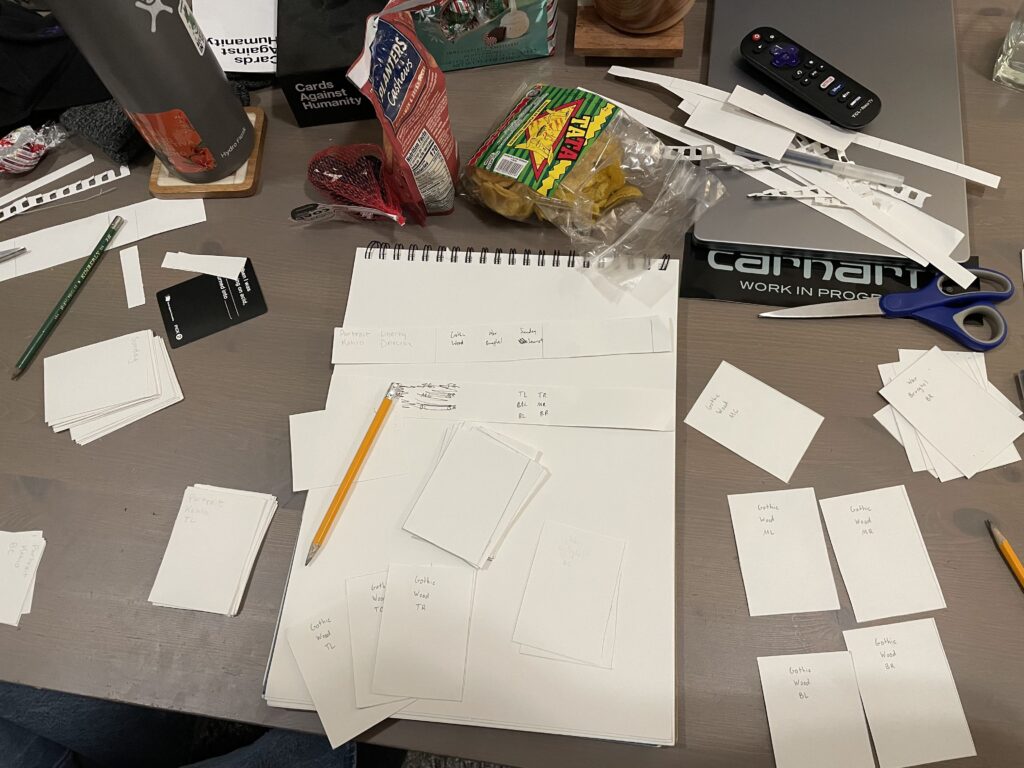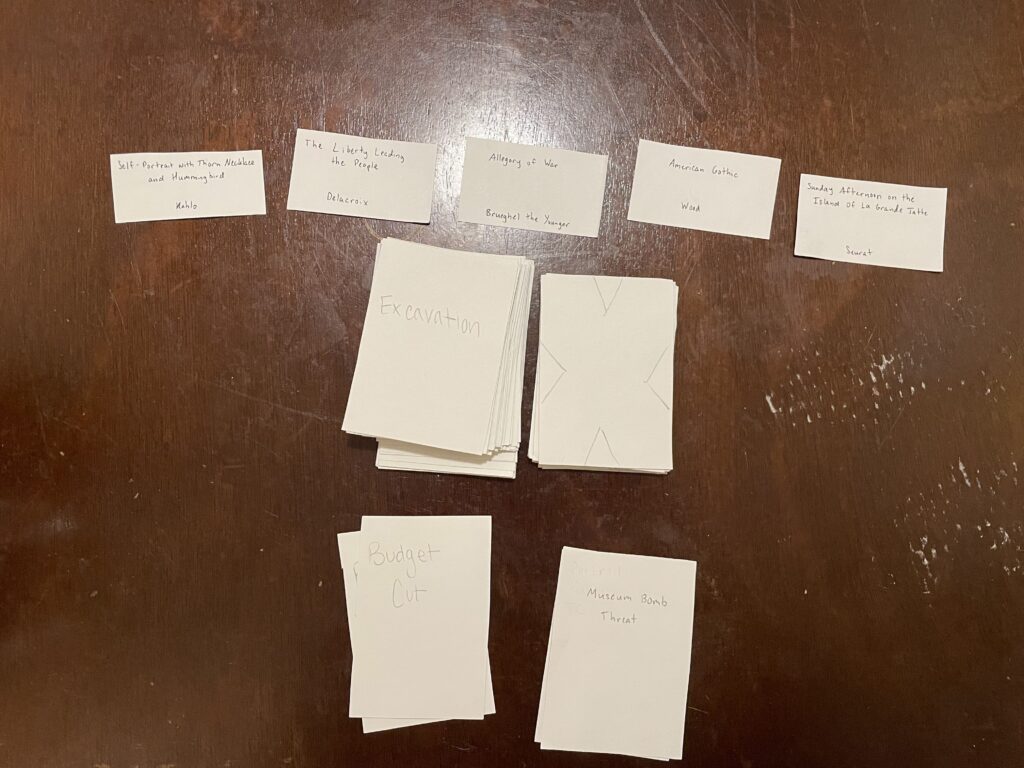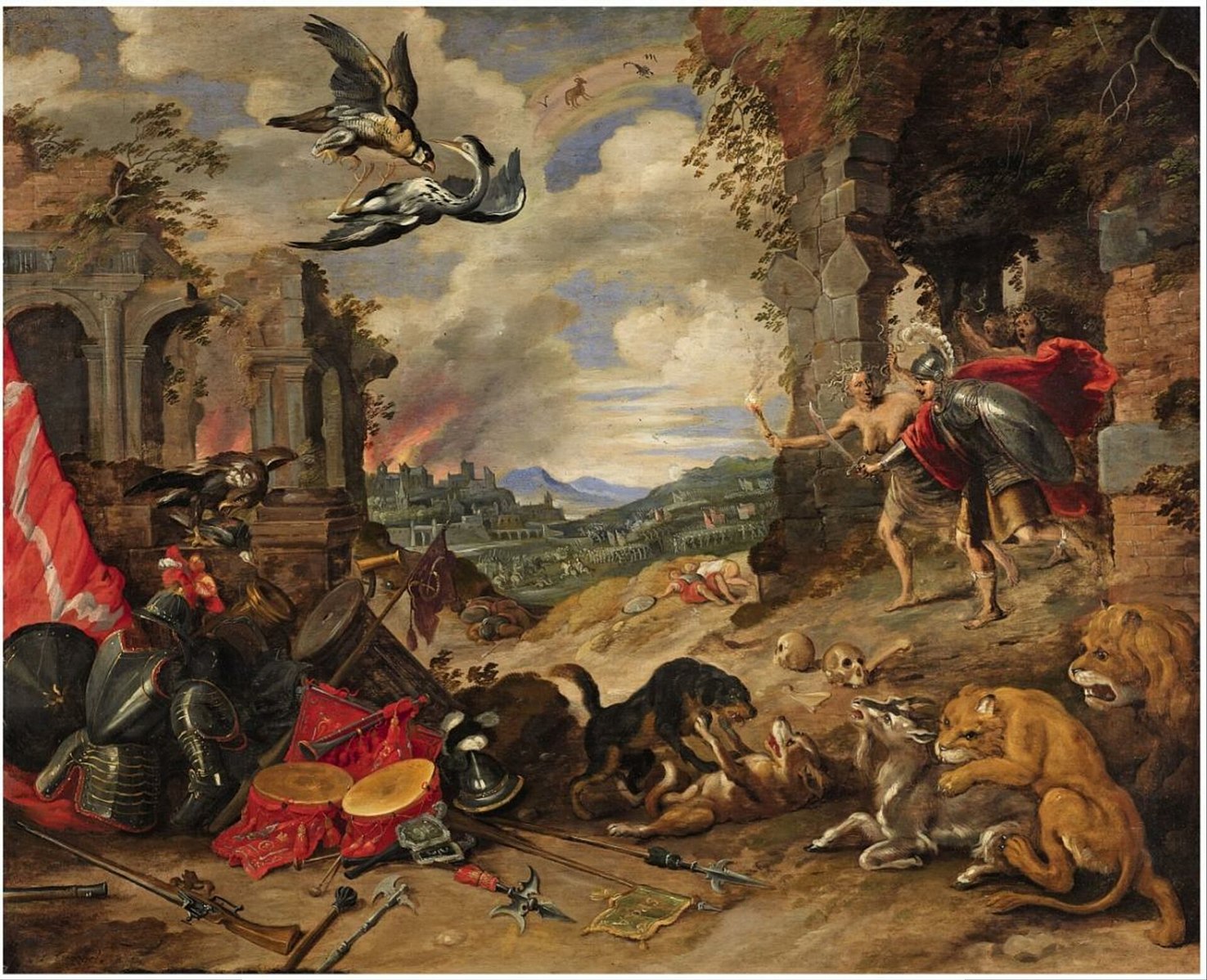Last week, our group decided to play a few board and card games in the MADD Center to get a feel for what we liked and disliked in terms of themes and mechanics. One game in particular stood out to us in terms of interesting mechanics: Control. It is a card game whose theme is of time travelers attempting to rebuild their ships and escape the void outside of time. We appreciated that different types of attack and sabotage cards encouraged interaction among players and led to friendly (if heated) competition. We preferred this outward focus, in which we spent much more time focusing on other players’ hands and strategizing against them than on our own, individual projects, and wanted to emulate this balance in our own game. Also, from a design standpoint, the idea of having both a hand of cards to choose from on your turn and a tableau of cards that you play in front of you was compelling. It gives the game more dimension and possibilities for strategizing.
However, there were quite a few aspects of Control that we disliked and thought could be improved upon. For one, the victory condition relied entirely on numerical point collection as opposed to reaching a goal/checkpoint, which we find much more compelling narratively. Further, the game allowed the players to select which way that they were going to reach the win condition, so we wanted to streamline that by making our game objective clear. Finally, while we liked the interplayer antics, there were not enough and we thought an interesting mechanic would be the possibility of swapping or cycling the players’ tableaus.
This brings us to the brainstorming of our game: MasterPieces. Scheduling and workspace coordination was easy because the two of us live together, so we spent the weekend throwing ideas at each other over the kitchen counter. To motivate the players beyond collecting nebulous points, our idea was to combine a puzzle experience with a strategic card game. This design turns the objective into something that the players are excited to see come together, and creates some sort of “art” beyond the design of the cards themselves. Because we knew that we wanted a clear objective based in the game’s narration, we played with the idea of winning some sort of post/prize/grant over the other participants as the motivation for victory. After considering 1) archeologists’ reconstruction efforts of lost historical sites and 2) mechanics’ engineering projects to construct new inventions, we landed on museum conservators who are invested in restoring famous paintings—or masterpieces, if you will.

Once we chose the theme, it was fun to play with the names of cards and actions to create a cohesive tone for the game that revolved around our narrative and embraced a healthy amount of chaos. For example, our favorite card is “Museum Bomb Threat,” which is an attack card that forces the receiving conservator to “take a day off work” and sit out a turn. We also spent some time perusing famous paintings for our conservators to restore.

Our first iteration of the game was not the most enjoyable to play. It was clunky, took too long to win (primarily because we made the win condition rely on the players collecting far too many painting panels), and the hand capacity was too big, making for no incentive to discard cards. On the second playthrough, we separated the action card and painting card decks so that it didn’t take so long to cycle through and find your own pieces, and we made the hand capacity smaller. This helped, but it still left too many painting cards on the table after what felt like a full game, so we further narrowed the scope to require only 4 painting panels to complete the restoration project. After this change, the game was much more fast-paced and made us more invested in the outcome because there was a more balanced chance of winning quickly. A couple more rounds left us with more fine-tuning ideas, e.g. more of one card and less of another. We were grateful for our friends taking their time to play the prototypes and give feedback, which made the process go much more smoothly. It was a great time!

In the following week, hopefully after successful play-testing in class, we will create the painting graphics, actual tableaus (player mats), and flesh out our fun card names and their connection to the conservation theme. We hope you enjoy the game so far!
